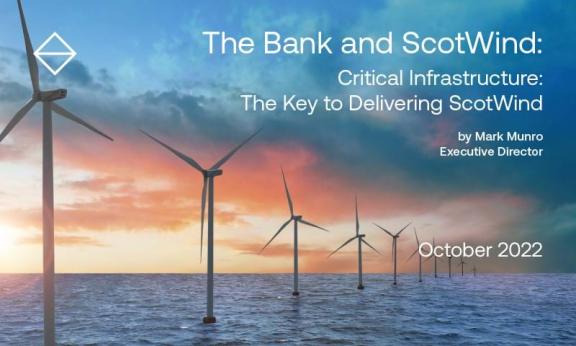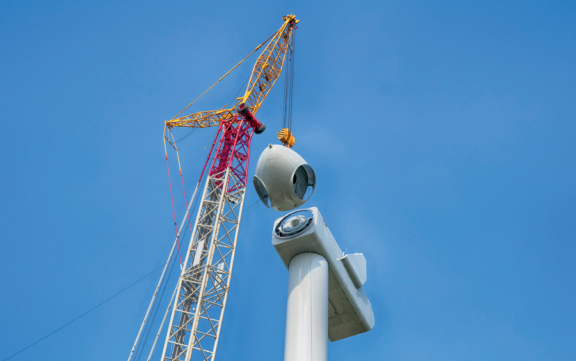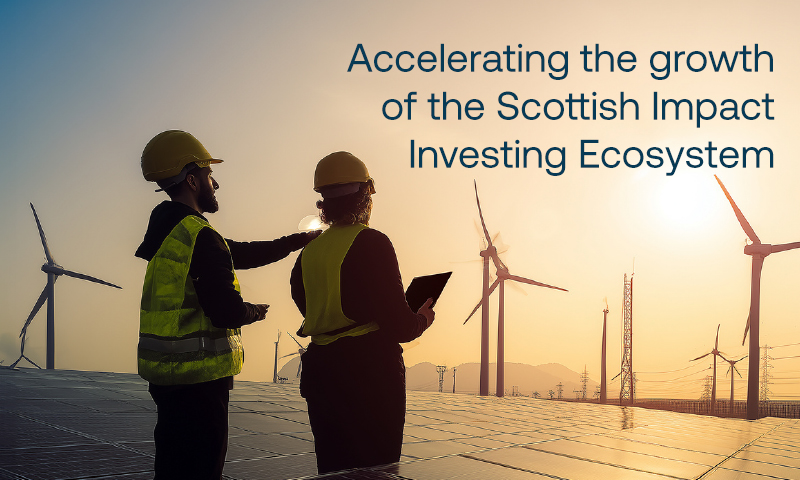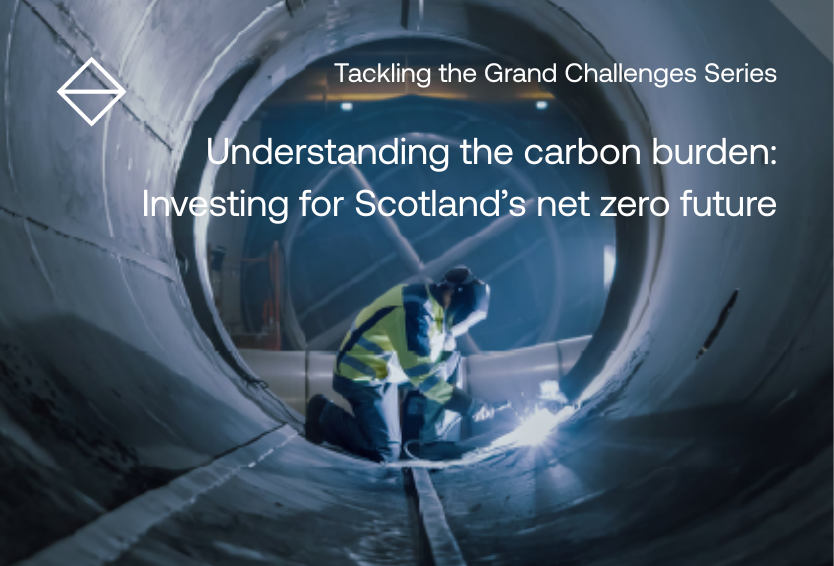Critical Infrastructure: The Key to Delivering ScotWind

The Bank
The Scottish National Investment Bank was launched in 2020. The Bank focuses on investing in businesses, projects and communities across Scotland that support the development of a fairer, more sustainable economy. In keeping with this, all investments must deliver both commercial and mission-impact returns, supporting at least one of the Bank’s missions:

This is the third in a series of blogs the Bank is intending to publish relating to ScotWind, offshore wind in general, and how the Bank can help in developing the market. The first covered the scale of ScotWind, the success of the round, and the challenges to delivery. The second piece examined the commitments developers have made to the Scottish supply chain and the wealth of knowledge the sector can lean on to scale. This blog looks at the key infrastructure required to deliver ScotWind and how the Bank is aiming to support the market in advance of Final Investment Decisions.
Critical Infrastructure
Some infrastructure for offshore wind will come to Scotland. The Operation & Maintenance facilities, given the distance and economics, will be based in Scotland. Aside from the work, which is uneconomic to deliver from outside Scotland, however, contract awards rely on the supply chain being capable and credible.
Ports, Harbours, Laydown Areas, Cranes – these are all vital mission critical aspects of the supply chain. Other infrastructure, manufacturing facilities, and cost saving technologies are highly desirable. The Bank is keenly examining the whole ScotWind supply chain, but the mission critical elements for ScotWind must be delivered, and delivered soon, if the endeavour is to succeed.
Final Investment Decision & Contract Surety
Final Investment Decisions (FID) for ScotWind projects are likely to begin in 2024 with decisions made up to the late 2020s.
To deliver on the 28GW planned for ScotWind, developers need confidence in the supply chain in Scotland. We must remember that there are yards and facilities across the world ready and able to deliver the projects, however through the Crown Estate Scotland application process the developers have committed to a certain level of local content spend in the Scottish Supply Chain, with ambitions to go even further. Ensuring the Scottish Supply Chain is ready to deliver on those contracts is a key part of the potential economic and societal success of ScotWind.
Given FID dates are rapidly approaching, investments in critical infrastructure need to be made in the near term. These investments will likely need to be in advance of contract awards with an “if you build it, they will come” approach. Investors will be required to take market risk rather than contract risk. The lead times for major infrastructure projects in the UK are, generally, too long, giving even more urgency to the investment horizon.
Ports and Harbours deep enough for floating wind turbines, and with enough capacity for the dozens of vessel movements required, will be needed. The Bank’s investment in Aberdeen’s South Harbour will add critical capacity to this market but more will be needed up and down Scotland’s east and west coasts. These investments are likely on the order of £100m-500m, with major time lags between investment decision and being ready for contracts. Dredging, extending sea walls, and extending berth areas are all major tasks and time is short to complete them.
Similarly, huge laydown areas will be required for blades, foundations and floaters, nacelles, towers, cables, and the vast amount of kit needed for each offshore wind farm. If concrete floaters are used for floating wind turbines, curing areas for the concrete are also significant in terms of land area. Proximity to port, to railheads and other transport networks, is vital. As such, ports and harbours need to figure out how to meet the needs of developers with relatively constrained land availability. Building more of these over the coming years goes hand-in-hand with delivering more port infrastructure to Scotland.
Marrying up 150m+ tall towers, 120m+ long blades, nacelles weighing in at 500t+, all sitting on a floating concrete foundation, will require huge cranes. Doing it all in an economically efficient way, and getting turbines assembled and floated out to site in a timely manner, will require minute-to-minute project planning taking account of weather windows both onshore and offshore. This requires spare capacity and flexibility throughout the supply chain, with just-in-time processes taking account of unforeseen delays. Floating wind turbines can be transported long distances on heavy transport vessels. Doing so has relatively challenging economics, however. Bringing large cranes capable of marrying the parts together to Scotland is a significant lead-time investment and needs to happen shortly to give developers and other investors surety.

Floating: Scotland’s existing advantage, strengthened
Cost reductions for fixed bottom offshore wind are continuing apace and the Scottish supply chain will need to innovate to earn market share here. In floating offshore wind, however, Scotland has the opportunity to position itself as a global pioneer, to drive the sector. The supply chain for floating offshore wind clearly overlaps with that for fixed bottom, in that the export cables, substations, and other parts are identical. Other similarities are more superficial, with the need for different towers, new blade technologies, and then the floater, chains, ropes, and cables to seabed. This sector is more similar to the offshore oil and gas industry, and many lessons learned over the past few decades of deepwater oil and gas developments can be applied to the wind market. Globally, floating offshore wind is a young market, and this is a key area where Scotland could have comparative advantage – if we can secure the critical supply chain infrastructure we need.
ScotWind will see developers choose their own technology. It is not yet clear which technology will win-out in the floating space, more likely, each floater design will be appropriate for the area it is in. Much as the oil and gas industry uses Spars, TLPs, and semi-subs, all these forms may find their niche in the floating offshore wind sector.
The scale that ScotWind offers the supply chain over the next decade gives huge opportunities to any supply chain entity specialising in the floating offshore wind sector - particularly those moving from experience in oil and gas to offshore wind.
With fixed offshore wind being around for a decade or so there are established technologies and technology providers in the fixed bottom supply chain, and whilst opportunities exist for the Scottish supply chain it will not be easy to create a competitive advantage. Their greatest opportunity lies in the floating offshore wind supply chain. The Scottish National Investment Bank is determined to work with developers, the supply chain, other financiers and investors as well as the public sector stakeholders to maximise Scotland’s share of the supply chain pie.

